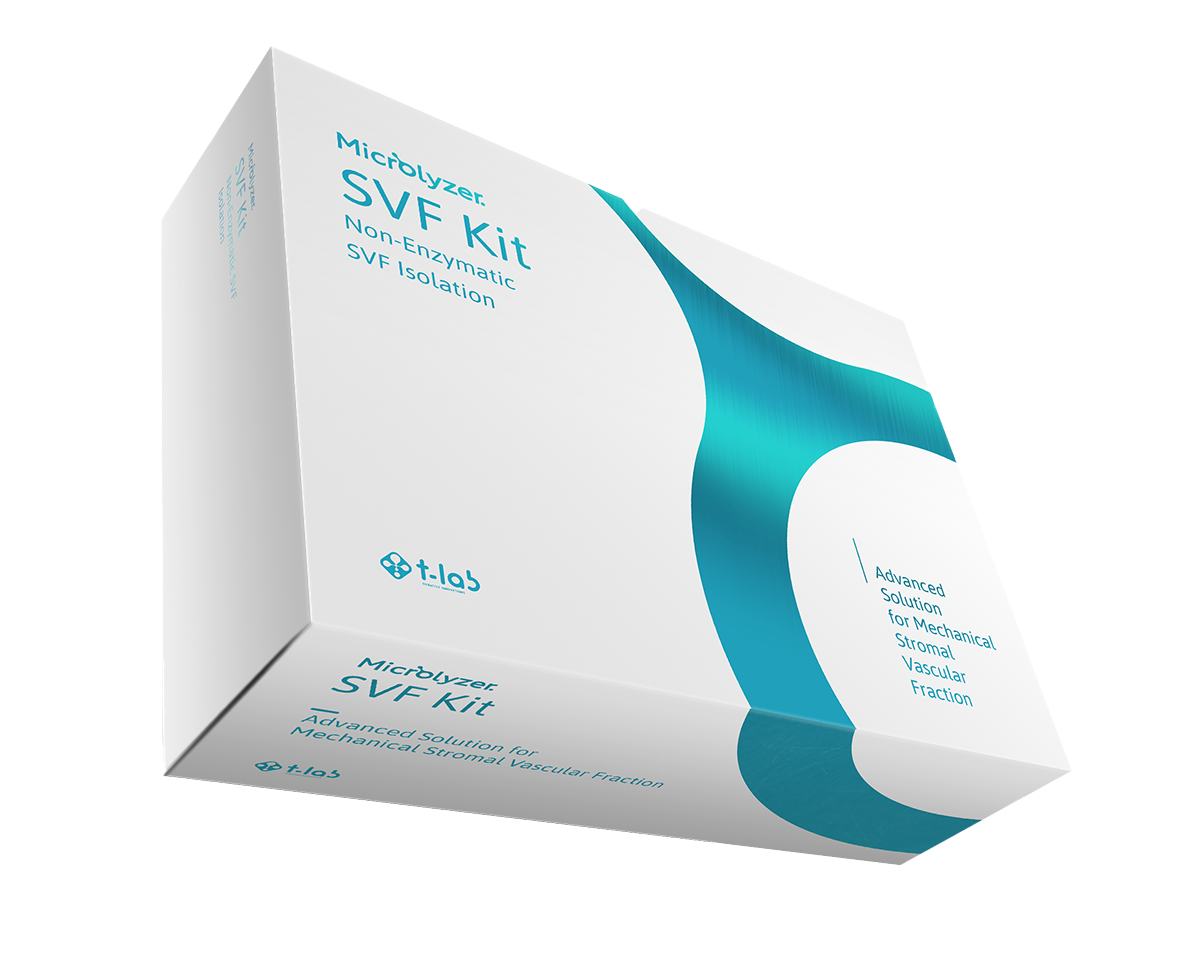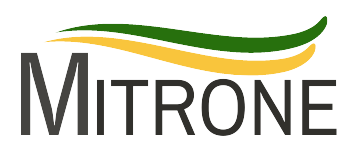SVF Fat Grafting Kit: T-Lab Microlyzer SVF Kit
SVF Fat Grafting Kit: T-Lab Microlyzer SVF Kit
In the realm of regenerative medicine, the SVF Fat Grafting Kit, with its Microlyzer SVF and diverse SVF kit options, emerges as a critical tool.
Introduction to SVF Fat Grafting
What is SVF Fat Grafting?
SVF fat grafting involves the transplantation of adipose tissue, rich in stromal vascular fraction (SVF) cells, to promote tissue regeneration and repair. This technique leverages the body's inherent healing abilities, positioning it as a forefront area in contemporary regenerative therapy and plastic surgery.
Importance of SVF in Regenerative Therapy
The significance of SVF in regenerative therapy is profound, mainly attributed to its high mesenchymal stem cell population. These stem cells exhibit remarkable regenerative capabilities, rendering SVF a vital component for genuine regenerative treatments aimed at tissue repair and rejuvenation, including the treatment of non-healing wounds.
Overview of Microlyzer SVF and SVF Kits
The Microlyzer SVF and the extensive SVF kit options introduce an innovative methodology to fat grafting procedures. The Microlyzer SVF kit facilitates a streamlined process for obtaining a high mesenchymal stem cell yield, revolutionizing the approach to regenerative treatments by ensuring precise and efficient SVF cell isolation.
Understanding SVF Isolation
Methods of SVF Isolation
SVF isolation methods are fundamental for acquiring the stromal vascular fraction, which contains essential stem cells. Traditionally, enzymatic methods have been employed, yet there is a growing interest in non-enzymatic SVF isolation techniques, which offer a safer and often more efficient alternative for preparing adipose tissue for fat grafting procedures.
Non-Enzymatic SVF Isolation Techniques
Non-enzymatic SVF isolation techniques, such as those facilitated by the T-Lab SVF kit and its series of microlyzers, enable the processing of fatty tissue without the use of enzymes. This method ensures the SVF layer is effortlessly separated, providing a safe injection of a high mesenchymal stem cell population for various regenerative applications, including a real regenerative treatment.
Real SVF vs. True SVF Isolation
Distinguishing between real SVF and true SVF isolation is critical for effective regenerative therapy. Real SVF (Stromal Vascular Fraction) refers to the entire population of cells isolated from adipose tissue, including stem cells, immune cells, and other cell types, while true SVF isolation focuses specifically on isolating a more purified population of stem cells, particularly mesenchymal stem cells (MSCs), from the SVF. True SVF isolation, often achieved through mechanical methods like those employing a microlyzer blade and a 41-micron cell filter, yields a high mesenchymal stem cell population, leading to a real regenerative effect. This approach guarantees a high-quality SVF pellet for optimal patient outcomes.
Microlyzer SVF Kit Options
Features of the Microlyzer SVF Kit
The Microlyzer SVF Kit presents a holistic solution for efficient SVF isolation, a critical step in fat grafting procedures. This cutting-edge kit is designed to deliver a high mesenchymal stem cell yield, ensuring optimal outcomes for regenerative therapies. Its advanced features facilitate the precise separation of the stromal vascular fraction from adipose tissue, making the process both reliable and user-friendly for medical professionals.
Benefits of Using the Microlyzer for Fat Grafting
Utilising the Microlyzer SVF for fat grafting procedures offers numerous benefits, mainly due to its non-enzymatic SVF isolation capabilities. This method ensures that the stem cells maintain their viability and regenerative potency, leading to a real regenerative effect. The Microlyzer SVF Kit provides a streamlined and efficient approach, reducing preparation time while maximizing the quality of the SVF for safe and effective patient treatments.
Applications of SVF in Regenerative Medicine
Regenerative Effects of SVF on Adipose Tissue
The regenerative effects of SVF on adipose tissue are positive, thanks to its rich concentration of stem cells. When reintroduced into the body, these mesenchymal stem cells actively participate in tissue repair and regeneration. This enhances the quality and viability of the grafted fat, making SVF a vital component in plastic surgery and other regenerative therapies aimed at restoring tissue integrity and function.
Role of Stem Cells in SVF Fat Grafting
The role of stem cells in SVF fat grafting is critical, as they are the driving force behind regenerative outcomes. The high mesenchymal stem cell population, isolated through real SVF isolation or true SVF isolation, ensures a potent regenerative effect. These cells contribute to angiogenesis, adipogenesis, and overall tissue remodeling, making SVF fat grafting a real regenerative treatment for various conditions, including non-healing wounds.
Case Studies and Clinical Outcomes
Case studies and clinical outcomes highlight the efficacy of SVF in regenerative medicine, with a focus on fat grafting. Patients undergoing procedures with a high mesenchymal stem cell yield, often obtained using a Microlyzer SVF Kit, show promising results in tissue regeneration and repair. These studies demonstrate a significant regenerative effect achievable through precise SVF cell isolation and the subsequent application of the SVF pellet, leading to real regenerative impact on patient recovery and aesthetic improvements.
Procedure and Techniques for Fat Grafting
Lipoaspiration and Fat Tissue Preparation
The initial step in SVF fat grafting involves lipoaspiration, a procedure for harvesting fatty tissue from the patient. This phase is performed using specialised aspiration syringes with unique locking mechanisms to ensure secure and efficient collection. The quality of the adipose tissue harvested directly impacts the success of the subsequent SVF isolation, as a high mesenchymal stem cell population is desired for optimal regenerative outcomes. Once collected, the fat tissue undergoes careful preparation before the stromal vascular fraction can be isolated, laying the groundwork for a real regenerative treatment.
Centrifugation Process for SVF Extraction
Following the harvesting and initial preparation of adipose tissue, the centrifugation process becomes vital for SVF extraction, as seen in methods like those utilizing the T-Lab SVF kit. This step allows for the separation of the SVF layer, which contains a high mesenchymal stem cell population, from unwanted components such as triglyceride and other cellular debris. The goal is to obtain a concentrated SVF pellet, ensuring a high mesenchymal stem cell yield for the subsequent fat grafting procedure. Unlike enzymatic methods, non-enzymatic SVF isolation, often aided by specific centrifugation protocols, preserves the viability of these essential stem cells, maximizing their regenerative capacity.
Utilising Syringes for Fat Grafting Application
After isolating the SVF pellet, typically following centrifugation and often through a microlyzer blade and a 41-micron cell filter, utilising syringes for fat grafting application is the final critical step. The microlyzer SVF kit, provides the necessary tools for precise re-injection. This often involves the use of sterile, single-use cannulas for safe injection. Such a method enables the targeted delivery of a high mesenchymal stem cell population and condensed fat to the recipient site. This facilitates a real regenerative effect in procedures from plastic surgery to treating non-healing wounds.
Conclusion and Future of SVF Fat Grafting
Advancements in SVF Technology
The T-Lab SVF kit is continuously refining the process of SVF cell isolation. This innovation aims to enhance efficiency and yield of a high mesenchymal stem cell population without the use of enzymes. This non-enzymatic SVF isolation promises to make SVF fat grafting more accessible and effective. It solidifies its role as a cornerstone of regenerative therapy, ensuring a high mesenchymal stem cell yield for various applications.
Potential for Real Regenerative Therapy
The immense concentrated stromal vascular fraction, rich in stem cells, offers positive healing capabilities. By leveraging a high mesenchymal stem cell population, procedures utilising T-Lab microlyzer SVF kit can induce a significant regenerative effect in tissues. This goes beyond what traditional methods can achieve. SVF fat grafting emerges as a real regenerative treatment for a multitude of conditions, including challenging cases like non-healing wounds. It pushes the boundaries of what is possible in plastic surgery and reconstructive medicine
Share




